What Happens After a TPK in D&D 5e
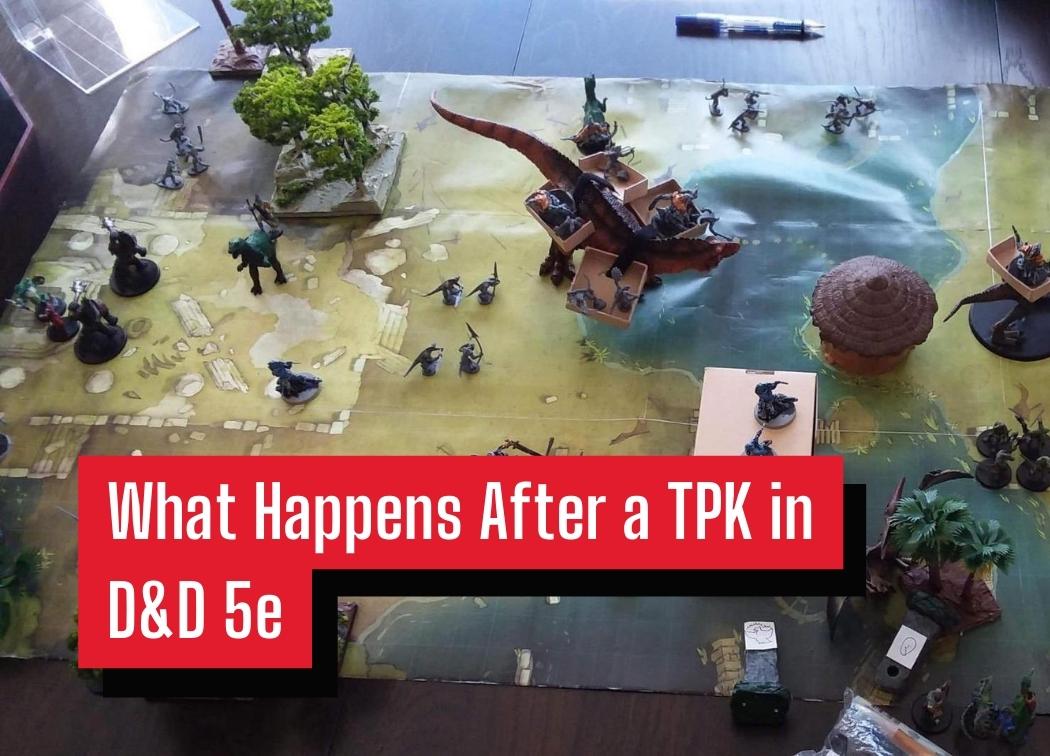
I hate it when a total party kill (TPK) happens. A TPK is exactly what it sounds like. The entire party is killed with no hope of being brought back to life. It’s one of the few scenarios in tabletop RPGs that can grind the campaign to a halt.
I’ve talked about character death before and how I love to use it as a way to keep the stakes high. It sucks when your character dies, but it’s a part of the game. Your actions have consequences, and some are severe and permanent like death.
However, a TPK is a bit more than just a consequence of death. As the campaign progresses, the party becomes an increasingly important part of the overarching story. What happens when they’re abruptly erased from existence? Can the campaign be continued with all new heroes, or is it best to just wrap everything up?
There are a lot of questions to be answered after the party is wiped out in short succession. It’s up to everyone at the table to work together to pick up the pieces or start fresh.
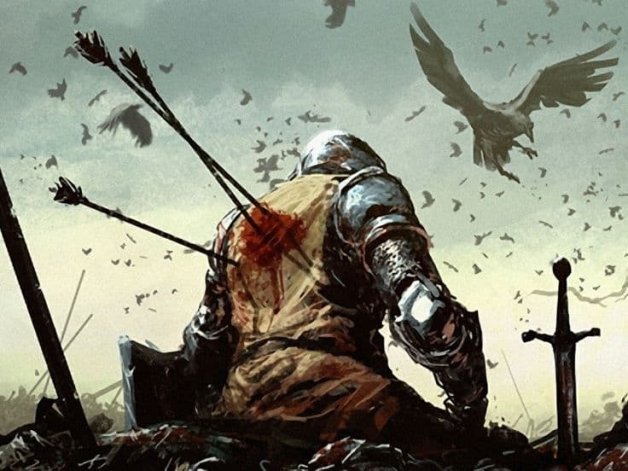
How Does a TPK Happen?
There are two real types of TPKs, fair and unfair. A fair TPK is one that the party could’ve prevented. This scenario should be the case for every TPK. Sometimes players make a tactical error or a mistake, other times the party bites off more than they can chew. These are situations fully within the players’ control.
An unfair TPK is one where the players have lost any control of the situation. The DM wants you dead and will stop at nothing until it happens. These ones are not fun, unsatisfying, and are a red flag for the DM.
There’s a difference between making something very difficult and making something mathematically impossible just to kill the party. If your DM is throwing you unfair TPK after unfair TPK you may want to have a discussion as a group since this is an entirely different problem than just a high difficulty game.
A Mistake
This is a pretty reason for character deaths in RPGs. Even if you as a player are tactically gifted, you may not always be on your A-game. Mistakes happen and they can cost you your life.
Catching an ally in an AoE, putting yourself between a group of enemies, or forgetting to use one of your situational spells or class features are all types of tactical errors that can lead to a character’s death. If the party makes enough of these, they can be enough to cause a TPK.
Miscommunication and improper positioning are by far the two major mistakes or tactical errors that I find cause TPKs. If the players aren’t in sync they can cause themselves and each other some major harm. Most of the time these slip-ups aren’t on purpose, they’re just human error.
The Party is in Over Their Heads
For one reason or another, the party bit of a bit more than they could chew. Maybe they’ve stuck their noses where they don’t belong, or maybe they drew the attention of multiple encounters’ worth of creatures into one unmanageable scenario.
This is possibly the most frequent reason I’ve seen as a DM where the party has put themselves in a potential TPK scenario. Sometimes plans fall apart, and you need to know when to run.
My advice for DMs that think about giving your party a difficult challenge is to give them a few hints that what they’re dealing is very powerful. If they don’t listen or don’t pick up on the hints, then that’s up to them.
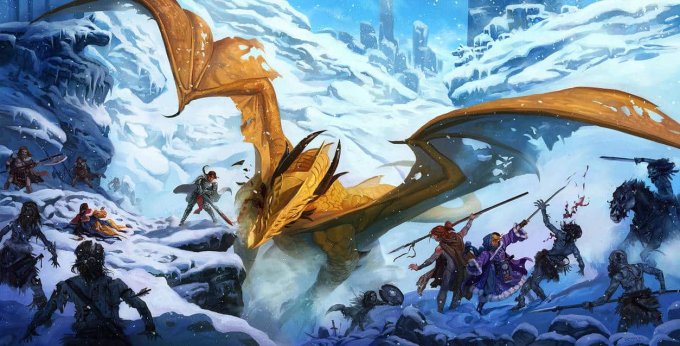
Unlucky Dice
D&D 5e revolves entirely around dice rolls. Ability checks, hitting an enemy, dealing damage, and Saving Throws all revolve around some type of luck of the dice roll. While modifiers can make a check easier to manage, they’re not the be-all-end-all of the check. Even the mightiest heroes can fail.
A lot of misses by the party or a lot of high-damage hits from the enemy can make a TPK. This isn’t a common scenario, that could lead to the deaths of the entire party, but it’s certainly possible.
The rogue rolling really low and not finding a big trap could, for example, lead to a TPK.
From my experience, unlucky dice seem to have more of an impact in the early levels of D&D 5e. When a lucky damage roll from a goblin can kill you, combat becomes dicey!
How to Avoid a Permanent TPK
TPKs are disruptive and can absolutely be campaign-ending scenarios. There are definitely times when everyone at the table doesn’t want this to happen, but unfortunately, that’s how the game played out.
One example of this was in my home campaign. I managed to TPK the party due to some extenuating circumstances and unlucky dice rolls. However, this was done in a room they purchased in the middle of the city. They’d even had some friendly NPCs on the way there long before the combat had even broken out.
The guards were coming, so the killer was forced to escape. They also didn’t have access to spells or abilities to permanently destroy the bodies. The party is rich enough to afford the cost of their resurrections, so it made narrative sense for this to happen.
The point being, if there’s a sensible way for everyone to come back and not grind the campaign to a halt, consider it as a possibility. That being said, you never have to go back on a TPK. It’s a part of the game.
That being said, here are a couple of ways to avoid the TPK from being a permanent ending for your party.
Friendly NPCs Find the Bodies
Depending on where and how the party died, friendly NPCs could seek them out and bring them to a powerful cleric. There are a ton of factors that will depend on your game.
For example, your game needs NPCs that are powerful enough to search for where the party is currently at. There also needs to be enough money, magical reagents, and powerful clerics to make resurrection a reasonable option for the party. Not every campaign or setting will check all of these boxes.
This is a visible way that the party can leverage their relationships with the NPCs of your game. They’ve clearly made enough of a positive impact in the NPCs’ lives that they would risk their own lives to search for them.
Perhaps they now owe the NPCs money or a big favor. There are plenty of plot hooks that pop up after character deaths!
The Villain Wants the Party Alive
The party was dropped, and maybe they were all stabilized, but they assumed they were to be killed by whatever creatures knocked them unconscious. However, even the dumbest creatures will still obey orders.
The villain, big bad evil guy (BBEG), or crime boss may find that the party is more valuable to them alive rather than dead. Perhaps they’d even bring them back from death just to torture or torment them. There are things worse than death in D&D, after all.
The villain may want information from the party, they may want to make a deal with them, or any number of things that it’d be easier to obtain with the party being alive rather than dead.
After all this, the party’s next order of business is to figure a way out of the villain’s clutches.
How to Continue the Story After a TPK
I’ve found that the way I approach the story after a TPK is different depending on two factors. The first is of course, where the campaign is story-wise. If you’re in the middle of the story or about to reach the climax, that’s possibly one of the worst times for a TPK. A TPK at the beginning stages of the story is much less devastating.
The second factor is the PCs’ level. This typically goes hand-in-hand with the story aspect, but I think there are a few differentiating elements. For D&D 5e I pay much more attention to the characters’ level and their exploits than I do the overarching story when I’m pivoting the game from a TPK.
Local Heroes: Levels 1-4
Ironically, these are the easiest levels to die at in D&D 5e. You have very few – if any – magical items, and you don’t have access to resurrection magic yet. There’s even a high chance of being one-hit killed at level 1 especially.
That being said, they’re also so early in the campaign that your players may not have uncovered much in terms of the grand story that encompasses the campaign. They’re also not going to be attached to their characters.
If a TPK happened at this point in your campaign, you could probably all meet back up and start back up in the same campaign in a different part of the world. No harm, no foul.
Heroes of the Realm: Levels 5-10
Personally, I find the two middle tiers to be the more devastating tiers to come back from a TPK. Let’s put it this way, the party has definitely uncovered parts of the story or they may have gotten themselves heavily involved in it already. It’s like getting up and turning the TV off halfway through a movie while someone is watching it.
On the other hand, that could make things even more interesting. Maybe now, your villain has obtained more power and the stakes have risen because the party failed to stop them. The next group of heroes your players roll up will have a lot more work to do!
If the party died in a location that NPCs could reasonably reach to retrieve their bodies, they’d probably be resurrected. Out of the 4 level tiers, this is probably the one that makes the most sense that a bunch of NPCs could find the party and bring them back to life.
Conversely, they’re famous enough that people surely would have heard of their deeds. The party definitely would have inspired people to become adventurers too someday. This tier is perfect for having another group of heroes come in and try to take on the mantle of Heroes of the Realm.
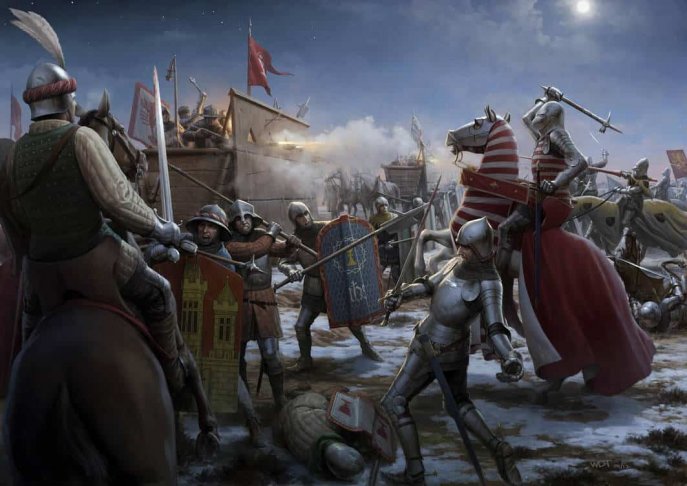
Masters of the Realm: Levels 11-16
Like the Heroes of the Realm tier, I find this set of levels to be annoying to be TPK’d. Your characters have gotten to the point where they’re fully fleshed out and are interesting to play. You probably have a bunch of cool magic items too! It sucks that all of that gets wiped out at this point.
Maybe you could make a case for resurrecting the party at this point, but it’s going to be difficult. There’s a great chance that they died deep within a dungeon where it wouldn’t be easy for a group of lesser NPCs to successfully retrieve their corpses. Regardless, they’d absolutely have the funds to resurrect themselves should they be found.
With that being said, at this point in the game, your players are definitely at or extremely close to the climax of the story. No one wants to stop here. When your group rolls up a new spread of characters they’ll absolutely be doing so with the campaign’s main story at the forefront of their minds.
Their characters are probably being created solely to reach the end of the game and find out what happens. This is the point where it’s tougher on the players than it is on you as a DM. They’re invested and throwing you a bone now, so take it!
Figure out a way to incorporate the new heroes into the story and then just roll with it.
Masters of the World: Levels 17-20
At this point, the party is famous enough that their deaths have an immediate and noticeable impact on the world. They’ve faced major villains and stopped great evils from happening. Everyone knows who they are.
This is also the point in D&D where the PCs become so ridiculously powerful that they are basically demigods. It’s going to be pretty damn difficult for them to die without any access to resurrection magic.
On the other hand, this is also the point of the game where magic like Disintegrate is commonplace. It’s unlike there’s be anything left to resurrect and that the killers would leave their bodies in the open.
I find this tier to be very similar to the Local Heroes tier, but for very different reasons. If I managed to TPK the group I’d probably end the campaign then and there. Their story has been told, and it’s probably the point where they’re trying to thwart the great evil that the whole campaign has been built upon.
Not every story has a happy ending, and this was one of them. It doesn’t make sense to me that the second group of demigods would just so happen to show up moments later to continue the story.
Conclusions
A total party kill can be super disappointing for everyone at the table, but it can also create a new life for the campaign. It’s up to you and your friends as to how you want to handle TPKs and character deaths. In the end, I believe there should still be consequences, even if you don’t go through with a TPK.
I find that it’s harder to justify reviving the party after a TPK in the early game and the late game. These are periods in the game where the entire party dying can easily mark the end of the game, but everyone can still have a satisfying conclusion to their adventures. Sometimes adventures end early, and not every adventure has a happy ending.
It can be a bit of a logistical nightmare for the DM to continue the campaign after a TPK. However, it’s also a time to refocus and figure out what’s important for the game. A fresh start can be just what your game needs.
Figure out how you want to handle permanent campaign-ending scenarios like TPKs. They’re pretty rare in 5th edition D&D from my experience, but they can absolutely still happen.
